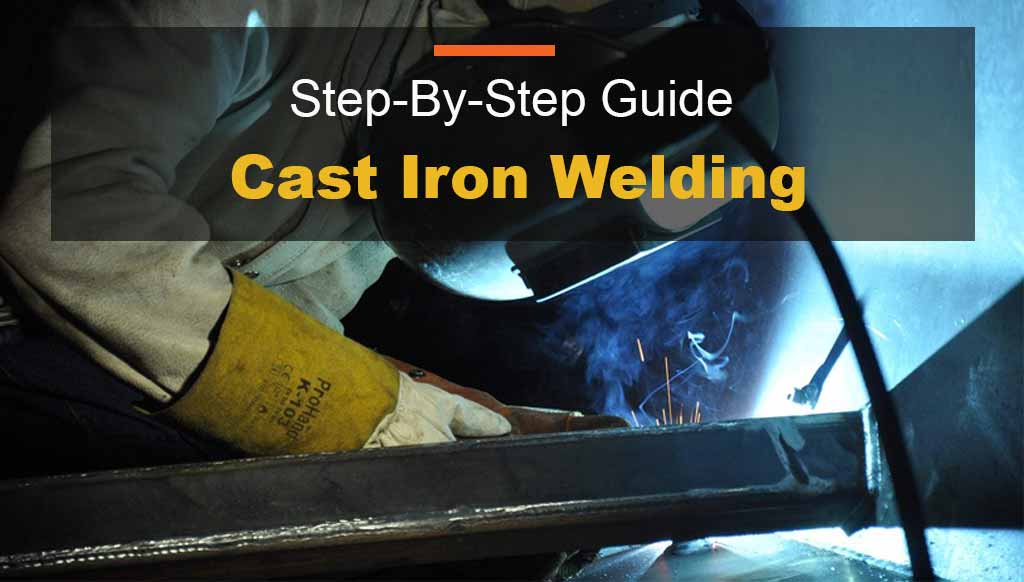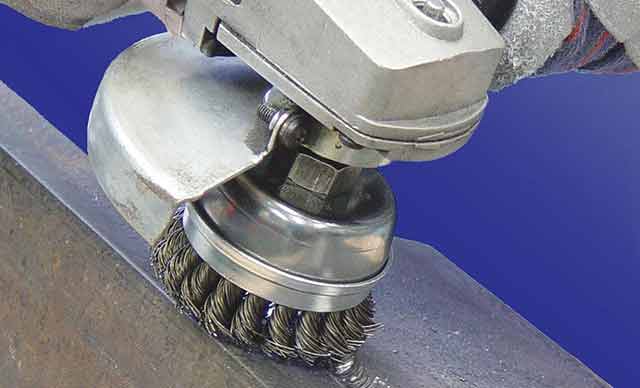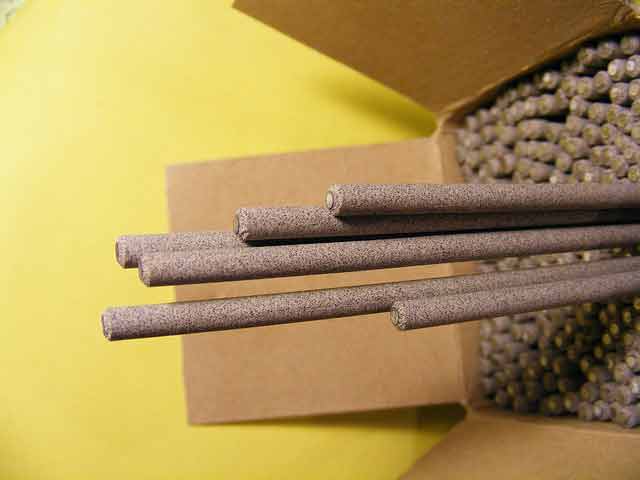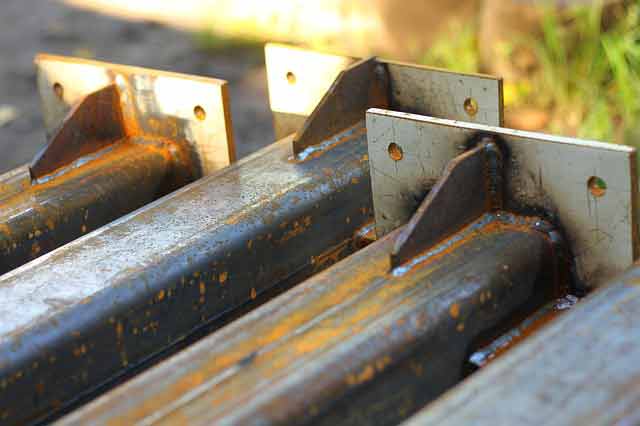
Cast Iron Welding Procedure [Step-By-Step Guide]
Cast iron is a brittle, cheap, and thorn in the flesh to fix but used everywhere from workshop to kitchen. It is a calamity to locate a crack in cast iron components for such machine owners. There can be a huge financial loss in replacing the broken part or hiring trained cast iron welding specialists to fuse the crack. You take it as an opportunity to learn how to weld cast iron, a new skill.
Taking the challenge to welding cast iron flawlessly as a wrong move can destroy your broken part even worse. Stick to the guidelines religiously so that your cast iron welding has no cracks and achieve the internal strength sufficient to withstand the purpose of the component. Your mission to accomplish, how to weld cast iron parts can save your money and time.
The inhouse-weld of cast iron needs thorough research in four key steps to know how to weld cast iron.
- Identification of the alloy
- Thorough cleaning of the part
- Selection of preheat temperature
- Selection of welding technique
1. Identify the type of cast iron
A family of iron-carbon alloys with 2-4% carbon makes them a hard cast iron metal. It is less malleable, less ductile, and doesn’t stretch or deform when heated. Instead, they crack and making the process of welding enormously difficult.

There are many types, and we show the weldability of cast iron.
Gray cast iron – Weldable with difficulty
White cast iron – Unweldable, almost
Malleable cast iron – Welding changes the properties making it useless
Ductile cast iron – Rarely weldable, slow, and extensive process.
It is always better to determine the type of cast iron from the user manual, manufacturer’s advice. Examine the crack as it changes its character with the passage of time. The weldable cast iron from the kitty is a gray type. This is the only cast iron which can be attempted for the fusion. You may seek help from an experienced cast iron welder for the ideal weld.
2. Cleaning the cast weld surfaces
As in most welding, the cleaner the surface, the better is the welding. Clean the surfaces from paint, grease, oil, and foreign material. Better to apply heat carefully and slowly to the weld area for a shorter time to remove the entrapped gases.

We have designed a simple test to judge the readiness of cast iron. We deposit a weld pass on the metal, in case of impurities, the weld zone will be porous. We will grind this welding pass and repeat the test until the porosity vanishes.
In peening the surface of the component is deformed deliberately by hammering, thus expanding the surface layer laterally. The stable subsurface thus allows expanding the surface layer, which is a beneficial, compressive residual stress layer. A ball-peen hammer to prevent cracking can do it. It is not a mandatory phenomenon that can be a useful tool when a crack is irregular. Preheating and slow cooling of the component is the crux for the cast iron welding procedure.
3. Preheating or cold weld
Welding cast iron has two schools of thought, one is hot, and the other is cold welding. Masses agree to preheat as a better choice while few goes with minimal heat or cold weld. We need to adopt one because unlike other metals the cast iron is brittle and has a minimal ability to deform when bending, contraction, and expansion.
Every metal has a property to deform on heating due to thermal expansion. Suppose one part of metal heats or cools faster than the other, then crack, and stress happens in the cast iron weld. Preheating minimizes this effect of heating near the weld zone, keeping the temperature near similar to the weld zone. It makes the whole component alter uniformly. It is better not to put excessive heat into the component, as cast iron has a character to change once the temperature is over 1400 degrees Fahrenheit.
The cold manner of welding cast iron without preheating may be helpful as it reduces the overall temperature. This process is not producing any visible cracks and stronger weld. The looks may be great, but internal strength remains poor in cold welding.
We have observed that the trained cast iron welders who are repairing or manufacturing the part, prefer the preheating method only. We need a finished cast iron weld not just visibly crackles but internally strong as well.
4. Choosing welding techniques and consumables
You have determined that gray cast iron is to weld, now it is time to choose the iron welding procedures. The best way to weld cast iron is with each and every welding process, provided you choose the accurate filler material and process. We base the choice of welding process on personal preference, but few factors remain to consider before the conclusion.
If we have come across a machined surface to weld then the preference may be TIG weld as the spatter from a stick and MIG welding cast iron may damage the clean surface. Tig welding remains to spatter free and a choice.
Once you try to curtail the extreme heat and quick cooling of the electric welding process, then oxy-acetylene is the option. It easily maintains the temperature of components and other wonderful options to weld cast iron.
Stick welding is the alternative method for welding cast iron where the electrode with flux is used. The machining is required after we complete this process. The selection of proper filler metal is the foundation of the cast iron welding.
Brazing can be another process of joining the cast iron, but it is not a welding process. You can adapt it when there is trouble in welding for some reason. Dirty or rusty surfaces may not join, so it is essential to cleanse the surfaces. Cast iron welding rod acts as filler material which sticks the surfaces and joins the parts once cooled.
Choosing the Proper Electrode & Wire Consumables
The range of filler wire and electrode that can weld cast iron are tiny. The available in the market are not designed specifically for cast iron only. They can cool quickly, cause stress cracks, and do not join properly. The following are a few available options in the market.

Nickel content-rich: This one is the best available electrode in the market, as it is soft and machinable. Looks are similar to cast iron and it does not cool quickly too. The disadvantage with this electrode is that it is very expensive and not suitable to weld thick sections.
Mix Nickel 55%, Iron 45%: The looks the same as cast iron when it is welded but quite affordable. The weld it produces is machinable but much harder than the nickel weld. The shrinkage is smaller than most iron rods to make the electrode with the least possible cracking.
Iron: The welding with this rod gives a distinct color than cast iron. The shrinking property is evident and makes it a challenge to use in weld cast iron. It hardens during welding but not machinable. It is an economical option and can be ground back.
Stainless steel: Cast iron on joining with stainless steel does not alter the property and harden as with iron consumables. It does not expand and contract significantly during the heating and cooling of the fusion process and poses a challenge to use it. It yields a machinable process after welding.
Bronze brazing: We have a choice to braze with oxy-acetylene or use it with Tig welder. We can provide a strong patch in a crack or between 2 components looking to join. The brazing here will Jon the two surfaces without changing the basic properties of cast iron.
Finish with slow cooling
Cooling is the most crucial part of the cast iron welding process. Slower the cooling, better the results. No dousing of the welded part by anything like chilly water or compressed air in any situation.

Let the cooling may take a few days even for better crack free results. The slow cooling can be achieved by putting the welded parts into sand or a warm oven. Uniform cooling is mandatory, which can not be achieved by cooling on a bench. It is a challenge to achieve a weld quality without extending the cooling time. We can apply periodic heat to cool the part uniformly.
Crack results from the tensile stress of thermal contraction. Once this stress reaches a critical junction, the crack in the weld happens. We may apply compressive stress to decrease the tensile stress which occurs on the cooling of the welding. Peening is the process which can be a significant help to prevent crack.
In Closing
A cast iron is commonly welded metal. The strength and utility of cast iron remain the same as if not the welded part. We have discussed step by step learning of welding cast iron. If you want to do the in-house welding, then follow every step precisely. The best results can be achieved by alloy’s study, selection of the welding process, filler wire selection. Skip no step to achieve the near-perfect results.
I hope you have enjoyed the step-by-step guide to weld cast iron. You are capable of saving time and money by doing on your own. The perfect welding with the internal strength you may hire the professional cast iron welder. We are available to help you out at any step.
Question and Answer Sessions
Is steel harder than cast iron?
Controversy about which metal is stronger, steel or cast iron. I think cast iron has more compressive strength while steel is more tensile. Steel is hard and mild to cast. It is tough to decide which is stronger.
Will a magnet stick to cast iron?
Magnets can attach only to the metal/alloy, having strong metals as iron and cobalt as their constitution. Metals such as brass, copper, silver, and gold in their natural states do not attract magnets.
Can cast iron be welded?
It is possible to weld broken cast iron parts by welding. We have to examine the part, alloy constitution, filler material, and cleaning of the parts properly.
How can you braze weld cast iron?
It needs an expert to braze a cast iron. It can be practiced by grinding a slot 1/16 to 1/8th of an inch in the alloy. The brazing tip turns fiery red at 600 degrees and continues to heat and fill the gap without changing the base metal.
What is the best glue for cast iron?
Liquid weld by name of steel epoxy and resin available. They need mixing before use, but epoxy hardens at a faster speed than resin. The epoxy can harden in 5-30 minutes while resin takes longer than 8-10 hours. to cure.
Can you weld a cast iron engine block?
It is possible to weld it with arc welding with a proper rod. The welding may cause the deformation of the engine block or make the weld area far more brittle and susceptible to cracking. The cold welding can be a help here.
Why is it hard to weld cast iron?
It is possible to weld cast iron but significantly difficult because cast iron has very high carbon content. Heating and cooling in the process make it harder and brittle, making it more prone to cracking. This can be achieved by properly following steps of welding cast iron.
Why does cast iron crack when welded?
It is far less malleable than steel. Welding causes tensile stress. The heating & cooling cycle of welding causes expansion and contraction leading on to crack instead of stretch or deformity.
Does cast iron get better with age?
Well cared and kept an article of cast iron stay much longer than expected. It gets better with age and time, with a process known as seasoning.
Here are some more articles on cast iron welding.
- https://www.esabna.com/euweb/oxy_handbook/589oxy15_1.htm
- https://www.lincolnelectric.com/en-us/support/welding-how-to/Pages/welding-cast-iron-detail.aspx?utm_referrer=direct/not+provided
- https://www.twi-global.com/technical-knowledge/job-knowledge/weldability-of-materials-cast-irons-025
- https://www.wikihow.com/Weld-Cast-Iron

Leave a comment